
CGG3O Travel and Tourism: A Geographic Perspective

Travelling Like a Geographer

Making Travel and Tourism Sustainable

The Past, Present and Future of Tourism

The Challenge and Change of Travel and Tourism
Unit 1: Travelling Like a Geographer
In the first unit of this course, you will begin to explore what it means to travel like a geographer. To do so, you will practice utilizing a set of tools called the Inquiry Method and the Geographic Thinking Concepts. You will also begin to analyse tourism issues from the viewpoint of a variety of stakeholders.
In addition, you will look at some basic concepts of travel and tourism, including the types of destinations, types of tourism, modes of transportation, factors that influence your travel decision making, and items and resources people need when they travel.
Unit 1 Activities
Unit 2: making travel and tourism sustainable.
As you move into the second unit of the course, you will consider the impact of tourism on different places around the world by looking at large-scale events, the different methods of protecting sites, and the impact of tourism on the lives and culture of the locals living in tourist areas.
Unit 2 Activities
Unit 3: the past, present and future of tourism.
In this unit, you will look at a few different realms of tourism, beginning with the tourism opportunities that exist in your own home town. You will also look at how technology has changed the way people plan and travel, and will research and predict what travel will look like in the future.
Unit 3 Activities
Unit 4: the challenge and change of travel and tourism.
In this unit, you will look at the different ways that tourism can be impacted by various environmental changes (natural disasters, pollution and environmental degradation), as well as ways in which tourism is connected to different Indigenous groups around the world. You will use knowledge gained throughout the course to look at a case study from a number of different stakeholder perspectives in order to look at the complexity of tourism issues.
Unit 4 Activities
Unit 5: social science in action.
This final culminating activity asks you to do two things: reflect on your learning in the course; and apply what you have learned to the question about which has the greater influence on us: our nature (how we were born) or nurture (our environment and our experiences).
Unit 5 Activities


Travel and Tourism Exercise : Question Answers and Grammar
Share this article, travel and tourism, ways with words, a. find the words form the text which mean the following., b. find the meanings of the following words in an english dicitonary, write their word classes adn use them in your own sentences., a. hazy (adjective) :, b. frontier (noun) :, c. lush (adjective) :, d. flipflops (noun) :, e. altitude (noun) :, f. fatal (adjective) :, g. magnificent (adjective) :, c. make a list of the nepali words used in the text and write their english equivalents..
You can download our android app using below button to get offline access to the notes directly from your phone.

Comprehension
Answer these questions., a. how did the author feel when she saw a colourful rooster in the western himalayas, b. how does she describe the houses on the trails of western nepal, c. what does she mean when she says "i walked towards a village15 kilometres further as the crow flies", d. describe the village thankur in brief., e. what happened when she reached jumla and how was she relieved, f. how does the author describe the bucket water in khali lagna, g. how was rara lake on the day she reached there, critical thinking, a. it is said that travelling a place equals to reading three books. do you agree why, b. the author spent five-week long walk along the western himalayas. do you think it was adventurous why, a. write a travelogue of your recent visit to a natural/religious place in about 300 words., b. write an essay in about 500 words on ‘importance of tourism in nepal’., b. complete these sentences using the verbs given in the brackets., c. change the following sentences into passive., a. i didn’t fix the problem., b. police protect the town., c. john’s mother raised him in a small town., d. someone painted the building last year., e. alexander fleming discovered penicillin in 1928., f. some students study grammar on the internet., g. someone had broken the window by 3:00 p.m., h. a strange man was watching us., i. tokyo will hold the olympics in 2020., j. we are working on the report right now., k. my manager has told him to arrive earlier., l. they could not have made the mistake., m. i hope they are going to hire me soon., n. i don’t like people staring at me., o. she likes people waving at her., p. who told you the story, q. is he repairing the bicycle, don't miss our nepali guide.
Moreover, If you have any doubt, suggestions or feedback about our services, then please feel free to contact us. You can contact us from the Contact Page . We will be happy to read your feedback and suggestions.
Additionally, You can also check our Privacy Policy page if you want to know how we may use your data generated from visiting this website.
CGG3O - Grade 11 Travel and Tourism: A Geographic Perspective
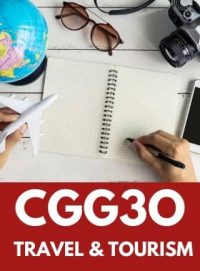
Course Description For CGG3O Grade 11 Travel and Tourism: A Geographic Perspective Online Course
CGG3O discusses issues related to travel and tourism within and between various regions of the world. Throughout this course, students will investigate the unique environmental, sociocultural, economic, and political characteristics of various regions, and examine travel patterns and trends to predict future tourist destinations. They will also investigate the impact of the travel industry on natural environments and human communities.
Summary Of Units And Timelines For Grade 11 Travel and Tourism: A Geographic Perspective CGG3O
Below is the suggested sequence of course unit delivery as well as the recommended number of hours to complete the respective unit. For complete details of targeted expectations within each unit and activity, please see each Unit Overview found in the CGG3O course profile.
Please be aware that, as per Ministry guidelines, OVS has a mandatory minimum requirement of 14 days enrollment for students to be eligible for a midterm report card and 28 days enrollment to be eligible for a final report card.
Fundamental Concepts Covered in Grade 11 Online Course
- Spatial Significance: This concept requires students to determine the importance of a place or region . They explore the connections that exist between the geographical location and physical characteristics of a site and analyse the unique relationships that exist in and between the natural and human environments in a particular place . Students come to understand that the significance of the same place may be different for humans, animals, and plants.
- Patterns and Trends: This concept requires students to recognize characteristics that are similar and that repeat themselves in a natural or human environment (patterns) and characteristics or traits that exhibit a consistent tendency in a particular setting over a period of time (trends). The characteristics may be spatial, social, economic, physical or environmental. Students analyse connections between characteristics to determine patterns; they analyse connections between those characteristics over time to determine trends.
- Interrelationships: This concept requires students to explore connections within and between natural and human environments. The interconnected parts of an environment or environments work together to form a system. Students must understand the relationships that exist within a system and then critically analyse the relationships between systems to determine the impact they have on one another.
- Geographic Perspective: This concept requires students to consider the environmental, economic, political, and/or social implications of the issues, events, developments, and/or phenomena that they are analysing. In order to solve problems, make decisions or judgements, or formulate plans of action effectively, students need to develop their ability to examine issues from multiple perspectives.
Teaching and Learning Strategies in an Online School
Teachers will bring enthusiasm and varied teaching and assessment approaches to the classroom, addressing individual students’ needs and ensuring sound learning opportunities for every student. The activities offered should enable students to relate and apply these concepts to the social, environmental, and economical conditions and concerns of the world in which they live. Opportunities to relate knowledge and skills to these wider contexts will motivate students to learn in a meaningful way and to become life-long learners. Teachers will help students understand that problem solving of any kind often requires a considerable expenditure of time and energy and a good deal of perseverance. Teachers also will encourage students to investigate, to reason, to explore alternative solutions and to take the risks necessary to become successful problem solvers. Effective instructional approaches and learning activities draw on students’ prior knowledge, capture their interest, and encourage meaningful practise both inside and outside the classroom. Students will be engaged when they are able to see the connection between the scientific concepts they are learning and their application in the world around them and in real-life situations. Due to its importance, students will have opportunities to learn in a variety of ways- individually, cooperatively, independently, with teacher direction, through hands-on experiences, and through examples followed by practice. The approaches and strategies teachers use will vary according to both the object of the learning and the needs of the students. Teachers will accomplish this in online environment with the use of: virtual labs, online simulations, animations, videos, discussion forums, live chat and other interactive objects.
Assessment & Evaluation
As summarized in Growing Success 2010 , the primary purpose of assessment and evaluation is to improve student learning. Information gathered through assessment helps teachers to determine students’ strengths and weaknesses in their achievement of the curriculum expectations in each course.
This information also serves to guide teachers in adapting curriculum and instructional approaches to students’ needs and in assessing the overall effectiveness of programs and classroom practices. As part of assessment, teachers provide students with descriptive feedback that guides their efforts towards improvement. Evaluation refers to the process of judging the quality of student work on the basis of established criteria, and assigning a value to represent that quality. All curriculum expectations must be accounted for in instruction, but evaluation focuses on students’ achievement of the overall expectations.
A students’ achievement of the overall expectations is evaluated on the basis of his or her achievement of related specific expectations. Teachers will use their professional judgement to determine which specific expectations should be used to evaluate achievement of overall expectations, and which ones will be covered in instruction and assessment but not necessarily evaluated. In order to ensure that assessment and evaluation are valid and reliable, and that they lead to the improvement of student learning, teachers must use assessment and evaluation strategies that:
- Address both what students learn and how well they learn
- Are based both on the categories of knowledge and skills and on the achievement level descriptions given in the achievement chart
- Are varied in nature, administered over a period of time, and designed to provide opportunities for students to demonstrate the full range of their learning
- Are appropriate for the learning activities used, the purposes of instruction, and the needs and experiences of the students
- Are fair to all students
- Accommodate students with special education needs, consistent with the strategies outlined in their Individual Education Plan
- Accommodate the needs of students who are learning the language of instruction
- Ensure that each student is given clear directions for improvement
- Promote students’ ability to assess their own learning and to set specific goals
- Include the use of samples of students’ work that provide evidence of their achievement
- Are communicated clearly to students and parents at the beginning of the school year and at other appropriate points throughout the school year.
The achievement chart outlines four categories of knowledge and skills. They include; knowledge and understanding, thinking, communication and application. Teachers will ensure that student work is assessed and/or evaluated in a balanced manner with respect to the four categories, and that achievement of particular expectations is considered within the appropriate categories. A final grade is recorded for this course, and a credit is granted and recorded for this course if the student’s grade is 50% or higher. The final grade for this course will be determined as follows:
- Seventy percent of the grade will be based on evaluations conducted throughout the course. This portion of the grade should reflect the student’s most consistent level of achievement throughout the course, although special consideration should be given to more recent evidence of achievement.
- Thirty percent of the grade will be based on a final evaluation and administered towards the end of the course.
Accommodations for students with an IEP in an Online School
All students can succeed. Some students are able, with certain accommodations , to participate in the regular course curriculum and to demonstrate learning independently. Accommodations allow access to the course without any changes to the knowledge and skills the student is expected to demonstrate . The accommodations required to facilitate the student’s learning can be identified by the teacher, but recommendations from a School Board generated Individual Education Plan (IEP) if available can also be consulted. Instruction based on principles of universal design and differentiated instruction focuses on the provision of accommodations to meet the diverse needs of learners.
Examples of accommodations (but not limited to) include:
- Adjustment and or extension of time required to complete assignments or summative tasks
- Providing alternative assignments or summative tasks
- Use of scribes and/or other assistive technologies
- Simplifying the language of instruction
Teachers will bring additional resources and teaching materials that provide a rich and diverse learning environment. Units in this course profile make specific reference to the intended textbook for this course but can be substituted for any relevant and approved text.
Reference: Canadian and World Studies, The Ontario Curriculum, Grades 11 and 12, 2015 (Revised) Ministry of Education of Ontario
Ontario Secondary School Diploma (OSSD) Requirements for all course.
Frequently Asked Questions
What is CGG3O?
CGG3O is a Grade 11 Travel and Tourism: A Geographic Perspective course at an Open preparation level.
What are 3O courses?
3O refers to the Grade level of the courses and the pathway. 3 means it is a grade 11 course and O means it is an open preparation course.
Click here for more information on Course Coding System
What is the prerequisite course for CGG3O?
Prerequisite: CGC1P, Grade 9 Issues in Canadian Geography or CGC1D, Grade 9 Issues in Canadian Geography
Click here for more information on Ontario secondary curriculum and their prerequisites
How long does it take to complete the CGG3O online course?
At Ontario Virtual School (OVS) you can complete an online highschool credit courses as quickly as 4 weeks, or take as long as 12 months.
Will my marks be sent directly to OUAC or OCAS?
Yes, we can send the marks for your online courses directly to OUAC , OCAS , your home, and to your day school.
Student & Parent Recommendations
Google Reviews for CGG3O - Grade 11 Travel and Tourism: A Geographic Perspective


- Queen's University Library
- Research Guides
Intermediate Senior Geography
- Travel and Tourism: A Geographic Perspective (CGG3O)
- Teaching Collection
- Lesson Plans & Resources
- Regional Geography (CGD3M)
- Forces of Nature: Physical Processes and Disasters (CGF3M)
- Introduction to Spatial Technologies (CGT3O)
- World Issues: A Geographic Analysis (CGW4U/CGW4C)
- World Geography: Urban Patterns and Population Issues (CGU4M)
- The Environment and Resource Management (CGR4M)
- Spatial Technologies in Action (CGO4M)
- Living in a Sustainable World (CGR4E)
- Finding Articles
- Professional Associations
- CURR623 Course Guide
Kanehsatake: 270 Years of Resistance , Alanis Obomsawin , provided by the National Film Board of Canada
In July 1990, a dispute over a proposed golf course to be built on Kanien’kéhaka (Mohawk) lands in Oka, Quebec, set the stage for a historic confrontation that would grab international headlines and sear itself into Canadian consciousness. Contains scenes of violence. Includes discussion prompts.
Lesson Plans
Canadian Geographic: Educator Resources, Grade 11 From Canadian Geographic, this webpage includes lesson plans on many topics, such as energy and natural resources, climate change and environment, regional geography, and geographic skills. Lesson plans can be filtered by grade and topic.
E-Learning Ontario: CGG3O From E-Learning Ontario, this resource includes four units for travel and tourism: traveling like a geographer; making travel and tourism sustainable; the past, present and future of tourism; and the challenge and change of travel and tourism.
Travel and Tourism: Ecological Cost This lesson plan, from EcoSchools Canada and written specifically for CGG3O, leads students to calculate the ecological impact of travel. This impact helps to guide future tourism policies and behaviours.
Understanding Active Transport This activity, from the University of Guelph, introduces the concept of active transportation to students. Includes activities, videos, discussions, and readings. Written specifically for this course (as well as CGF3M and CGR4M).
Other Resources
Learn at Home: Grades 9 to 12 Activities and resources for high school students to do at home to supplement their learning.
Resources in the Education Library
- << Previous: Forces of Nature: Physical Processes and Disasters (CGF3M)
- Next: Introduction to Spatial Technologies (CGT3O) >>
Quick Links
- Search Omni
- Omni Search Tips
- Education Guide
- All Education Guides
- All Queen's Library Hours
Video Collections
- Last Updated: Jan 3, 2024 10:30 AM
- Subjects: Education
- Tags: classroom resources , education , educational research , geography , lesson plans , Ontario education , student resources , teacher resources , textbooks
- Mission, Vision & Values
- Information Access and Privacy
- Policies & Procedures
- Trustees' Multi-Year Plan
- Director's Action Plan
- Board Strategies
- Ontario Curriculum
- Special Education
- Guidance and Career Education
- Kindergarten

- Curriculum Activities (Grade...
- Travel and Tourism (A...
Travel and Tourism (A Geographic Perspective), Grade 11 Open (CGG3O)
Geographic Inquiry and Skill Development
Use the geographic inquiry process and the concepts of geographic thinking when investigating geographic issues relating to travel and tourism
- Geographic Perspectives: Using Different Lenses (Website)
Apply in everyday contexts skills, including spatial skills, developed through geographical investigation, and identify some careers in which a background in geography might be an asset
- Geographic Investigation Skills (Website)
- Dawn of a new decade—what can geographical and environmental education offer for the 2020s (Academic Publication)
Spatial Organization: Why, Where, and How We Travel
Analyse patterns of spatial interaction between tourist sources and destinations (FOCUS ON: Spatial Significance; Patterns and Trends)
- Why we drive : toward a philosophy of the open road (Book)
- Reading Graphs (YouTube)
- What Are The 20 Most Visited Cities in the World? (Website)
- Travel therapy : where do you need to go? (Book)
Explain interrelationships between tourism and the spatial distribution of services and attractions in tourist destinations (FOCUS ON: Patterns and Trends; Interrelationships)
- Destination Success – the Factors and Actors (Website)
- The Wandering RV (Website)
- 21 Types of Tourist Attractions (Website)
- Best Vacation Ideas and Destinations for Seniors (Website)
Analyse a range of factors that influence tourists’ destination choices (FOCUS ON: Spatial Significance; Geographic Perspective)
- The Competitive Destination: A Sustainable Tourism Perspective (Online eBook)
- How Consumers Choose a Destination (Website)
- The 21 Types of Tourist Attractions (Website)
Sustainability, Stewardship, and Tourism
Assess impacts of tourism and different modes of travel from a geographic perspective (FOCUS ON: Interrelationships; Geographic Perspective)
- Go lightly : how to travel without hurting the planet (Book)
- Tourism and Climate Change (Hoopla eBook)
- Tourism and Transport (Hoopla eBook)
- The Struggle For Sustainable Tourism (Kanopy eVideo)
- Marine Tourism Impacts and their Management on the Great Barrier Reef (Online Article)
- Environmental Impacts of Tourism (Webpage)
- Carbon Footprint of Tourism (Webpage)
- Yosemite National Park – World Heritage Outlook (Webpage)
Analyse strategies for the protection of natural and cultural resources that are essential to tourism, and assess their effectiveness (FOCUS ON: Interrelationships; Geographic Perspective)
- Coastal Mass Tourism (Hoopla eBook)
- Too Much Tourism? 2: Snowdonia (Kanopy eVideo)
Assess social and cultural impacts of tourism on tourist destinations, and explain the role of good stewardship practices in supporting the social and cultural sustainability of destination communities (FOCUS ON: Spatial Significance; Geographic Perspective)
- Overtourism (Hoopla eBook)
- Tourism, Exploitation, and Cultural Imperialism: Recent Observations from Indonesia. (Online Article)
- Cultural & HeritageTourism – Tourism Nova Scotia (Website)
- World Travel & Tourism Council: Travel and Tourism as a Catalyst for Social Impact (Website)
- UNWTO: Sustainable Development (Website)
- Ethics, Culture & Social Responsibility (Website)
Interrelationships and Trends
Analyse interrelationships between tourism and local human and natural systems (FOCUS ON: Spatial Significance; Interrelationships)
- The history of wine in Essex County (Book)
- Memoirs of a Border City (Book)
- Discover the County (Website)
- Getting Here: Tourism Windsor (Website)
- Tourism Windsor-Essex (Website)
Assess the impacts of social, economic, and political trends and events on travel and tourism (FOCUS ON: Patterns and Trends; Geographic Perspective)
- Sustainable Tourism After COVID-19 (Hoopla eBook)
- No-Nonsense Guide to Tourism (Hoopla eBook)
- Windsor MP, mayor announce $1 million in airport funding (Website)
- 6 Ways the 1992 Olympics Transformed Barcelona (Website)
- The New Technology and Travel Revolution (Website)
- Social impacts of tourism (Article/YouTube)
Identify evolving trends in travel and tourism, and analyse their implications for future tourism development (FOCUS ON: Patterns and Trends; Interrelationships)
- Millennials, Generation Z and the Future of Tourism (Hoopla eBook)
- Cannabis Tourism: How a New Travel Trend is Taking Off (Website)
- What is adventure tourism and why is it so big? (Website)
Impacts of Change: Challenges for Travel and Tourism
Analyse impacts of environmental conditions and concerns on the tourism industry (FOCUS ON: Interrelationships; Geographic Perspective)
- Handbook on Natural Disaster Reduction in Tourist Areas (English version) (Website)
- Collateral damage: Tourism industry jolts as natural disasters strike Asia (Website)
- International Association of Antartica Tour Operators (Website)
Assess impacts of the travel and tourism industry on local populations and indigenous peoples (FOCUS ON: Interrelationships; Geographic Perspective)
- Polar Tourism (Hoopla eBook)
- Tourism, Colonialism, Indigenous Human Rights and Reconciliation (Website)
Analyse the role of the tourism industry, governments, and international organizations in planning, promoting, and supporting travel and tourism (FOCUS ON: Spatial Significance; Patterns and Trends)
- Strategic Management for Tourism Communities (Hoopla eBook)
- Tourism Essentials Series (Hoopla eBook)
- Tourism and Resilience (Hoopla eBook)
Recent Comments
Careers | Contact Us | Staff
Regional Geography – Travel and Tourism: CGG3O (Grade 11, Open)
This course focuses on travel and tourism as the vehicle for studying selected world regions. Using a variety of geotechnologies and inquiry and communication methods, students will conduct and present case studies that develop their understanding of the unique characteristics of selected world regions; the environmental, cultural, economic, and political factors that influence travel and tourism; and the impact of the travel industry on communities and environments around the world.
Unit 1: Understanding Travel and Tourism
Unit 2: tourism and the economy.
This unit focuses on the economic development and impacts of travel and tourism on world regions. Students analyze the economic effects associated with economic disparities, travel balances and political policies that affect specifically tourism. They compare tourism characteristics of two city-centred regions (New York vs. Rio de Janeiro). They also look at how advertising and marketing effect tourism levels in Canada and create their own advertisement for Canada’s attractions.
Unit 3: Tourism and Culture
Unit 4: tourism and the environment, unit 5: future of tourism, unit 6: culminating activity.
Students must complete the course culminating task, “The Travel and Tourism Report: A Case Study,” to meet the expectations and requirements of Regional Geography: Travel and Tourism, CGG3O. This report is worth 30% of the final course evaluation. The collection of data and the report will be assessed using a rubric.
© York Catholic District School Board · Copyright / Disclaimer · Accessibility 'Fragrance/Scent Safe'
Contact Us | Careers | Staff
Programmes & Qualifications
Cambridge igcse travel and tourism (0471).
- Past papers, examiner reports and specimen papers
You can download one or more papers for a previous session. Please note that these papers may not reflect the content of the current syllabus.
Unlock more content
This is only a selection of our papers. Registered Cambridge International Schools can access the full catalogue of teaching and learning materials including papers from 2018 through our School Support Hub .

Past papers
- -->June 2022 Mark Scheme Paper 11 (PDF, 199KB)
- -->June 2022 Insert Paper 11 (PDF, 1MB)
- -->June 2022 Mark Scheme Paper 21 (PDF, 201KB)
- -->June 2022 Insert Paper 21 (PDF, 964KB)
Examiner reports
- -->June 2022 Examiner Report (PDF, 2MB)
Specimen papers
- -->2024 Specimen Paper 1 Insert (PDF, 2MB)
- -->2024 Specimen Paper 1 Markscheme (PDF, 1MB)
- -->2024 Specimen Paper 2 Insert (PDF, 990KB)
- -->2024 Specimen Paper 2 Markscheme (PDF, 1MB)
Stay up to date
Sign up for updates about changes to the syllabuses you teach
- Syllabus overview
- Published resources

Grade 11: Travel and Tourism: Geographic Inquiry and Skill Development
- Introduction
- Geographic Inquiry and Skill Development
- Spatial Organization: Why, Where and How We Travel
- Sustainability, Stewardship, and Tourism
- Interrelationships and Trends
- Impacts of Change: Challenges for Travel and Tourism
Suggested Databases
- Find more databases Link to the A to Z list of VLC databases for the Upper Canada District School Board
VLC Bookmark
Logins for all VLC databases are found on the back of the VLC Bookmark.
Talk to your LCI today!

- Resource Evaluation: The CRAAP Test Use this evaluation checklist to determine if a resource is worthwhile. Does your book, website, magazine article pass the CRAAP Test?
- Identify Your Research Question: K-N-R Worksheet Provided by the Waterloo District School Board, this template, with slight modification, will help UCDSB students define their research question based on what they know and what they need to know.
- Gr. 7-12 Research Template This template guides students through the research process starting with conducting background reading.
- Primary, Secondary and Reference Sources This How Do I guide will show you how to identify different types of sources.
- Boolean Operators - Search Databases like an Expert! Learn how to the Boolean Operators, OR, AND, & NOT to enhance your searches.
- Websites vs VLC Databases
Want to learn more?
- Job Bank: Career Planning and Quizzes Take some of Job Bank's career planning quizzes to learn more about careers for your future.
- Government of Canada - Job Bank Job Bank is the Government of Canada's leading source for jobs and labour market information. Use TRAVEL, TOURISM, HOTEL and other keywords to search for relevant travel and tourism job descriptions.
Presentation Tools
Gr. 9-12: Ask Us/Demande Moi

Gr. 9-12: How do I start my research?

Gr. 9-12: How do I cite my sources?

- << Previous: Introduction
- Next: Spatial Organization: Why, Where and How We Travel >>
- Last Updated: Apr 22, 2024 2:10 PM
- URL: https://vlc.ucdsb.ca/travelandtourism
- Bahasa Indonesia
- Slovenščina
- Science & Tech
- Russian Kitchen
Moscow metro to be more tourist-friendly
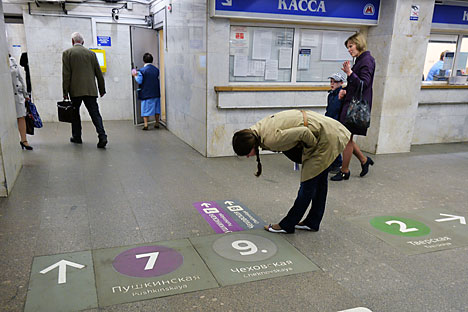
A new floor sign system at the Moscow metro's Pushkinskaya station. Source: Vladimir Pesnya / RIA Novosti
For many years now, Moscow has lagged behind St. Petersburg when it comes to making life easy for tourists, especially where getting around the city is concerned. Whereas the northern capital installed English-language maps, signs and information points throughout its subway system in the late 2000s, the Russian capital’s metro remained a serious challenge for foreign visitors to navigate.
Recent visitors to Moscow may have noticed some signs that change is afoot, however. In many stations of the Moscow subway, signs have appeared on the floor – with large lettering in Russian and English – indicating the direction to follow in order to change lines. Previously, foreign visitors using the Moscow metro had to rely solely upon deciphering the Russian-language signs hanging from the ceilings.
Student volunteers help tourists find their way in Moscow
However, this new solution has a significant drawback. “The floor navigation is visible only to a small stream of people – fewer than three people per meter. During peak hours, this navigation will simply not be noticed,” said Konstantin Trofimenko, Director of the Center for Urban Transportation Studies.
One of the biggest problems for tourists in the Russian capital remains the absence of English translations of the names of subway stations in the station vestibules and on platforms. The Department of Transportation in Moscow has not commented yet as to when this problem will be solved. However, Latin transliterations of station names can already be found in the subway cars themselves.
Finding the right exit
At four of the central stations – Okhotny Ryad, Teatralnaya, Ploshchad Revolyutsii, Lubyanka and Kuznetsky Most – the city authorities have now installed colorful stands at the exits with schematic diagrams of the station’s concourse and surrounding area, which provide information about the main attractions and infrastructural facilities.
The schematic diagrams are the work of British specialists from the City ID and Billings Jackson Design firms, who have already implemented successful projects in New York and London.
According to Alexei Novichkov, expert at the Design Laboratory at the Higher School of Economics, the design of these information booths raises no objections: The color solutions, font, layout and icons are consistent with international standards.
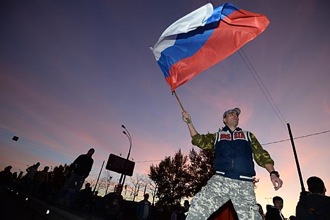
However, the stands do have some shortcomings. “Many questions are raised about the fact that the developers of these maps did not apply orientation to the north, and have provided layouts of the surrounding areas with respect to the exits,” says Novichkov. “A system like that is used for road navigators, but most of the ‘paper’ guides and maps are oriented strictly to north. The subway map is also oriented to north, so people may become confused.”
Muscovites and foreign visitors are generally positive about these navigation elements, with most of them citing the numbered exits from the subway as the most useful feature.
The fact is that many Moscow subway stations have several exits. One of the busiest central stations of the Moscow subway in particular, Kitay-Gorod, has more than a dozen exits. Previously, these exits were differentiated from each other only with signs in Russian referring to the names of streets and places of interest to which they led – making it easy for tourists and those with poor navigation skills to get confused.
Now, when making an appointment to meet a friend, instead of struggling to find the right spot when they tell you: “I'll meet you at the exit to Solyanka Street,” you can just propose to meet under a specific exit number.
“I’ve lived in Moscow for seven years,” says Angelika, a designer from Voronezh, “but I still don’t always know where to go to find the place I need, so the new schematic diagrams will be very useful. Previously, some subway stations had maps, but not with so much detail.”
Teething problems
Foreigners, meanwhile, focus their attention on other elements. “It is good that the new information boards have QR-codes, which can be ‘read’ by smartphones,” says Florentina, a writer from Vienna. But there are also shortcomings. “The English font of the information on posters and in the captions to theaters and museums is too small – you have to come very close to see it well,” she says.
Pleasant encounters on the streets of Moscow
Florentina was also dissatisfied with the fact that such posters are not provided at all subway stations: “When I was trying to find Tsaritsyno Park (a museum and reserve in the south of Moscow) at a subway station with the same name, it turned out to be quite difficult,” she says.
“There are no maps with landmarks for other areas, such as those already in the city center. There were no clear pointers in the English language, and the passers-by I met did not speak in English, so they could not help me,” she adds.
Officials say that the navigation system is gradually being redeveloped and improved. According to Darya Chuvasheva, a press representative for the Department of Transport of Moscow, the introduction of a unified navigation system will take place in stages.
“By the end of 2014, the system will first appear on the first subway stations on the Circle Line. By the end of 2015, we plan to install the system at all major stopping points, subway stations and transport interchange hubs,” says Chuvasheva.
All rights reserved by Rossiyskaya Gazeta.
to our newsletter!
Get the week's best stories straight to your inbox
This website uses cookies. Click here to find out more.
Lyubertsy Tourism
- Things To Do in Lyubertsy
- Lyubertsy Itineraries
- Lyubertsy Hotels
Lyubertsy Trip Planner
Plan your customized day by day trip plan for Lyubertsy. Choose from various experinces categories as adventure, romantic and family and kids friendly for your trip using using Lyubertsy trip planner.
- THINGS TO DO
- HOW TO REACH
- TOP RESTAURANTS
- Moscow Trip Planner
- Yaroslavl Oblast Trip Planner
Essential Butovo
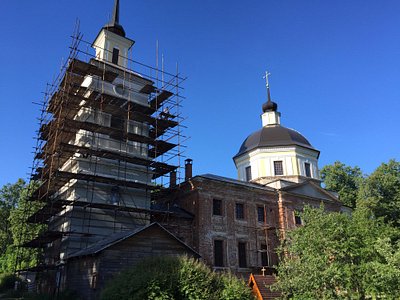

College Sports | Arizona Cardinals pick Hurricanes cornerback…
Share this:.
- Click to share on Facebook (Opens in new window)
- Click to share on X (Opens in new window)
Daily e-Edition
Evening e-Edition

- Mike Bianchi Commentary
- Orlando Magic
- Orlando City SC
- Orlando Pride
- UCF Knights
- FSU Seminoles
- UM Hurricanes
- High School Sports
College Sports
College sports | arizona cardinals pick hurricanes cornerback jaden davis in final round of nfl draft.

Jaden Davis spent one season with his hometown Hurricanes , and that vaulted him into the professional ranks.
The Arizona Cardinals picked Davis, who is a St. Thomas Aquinas alum, with the 226th pick in the seventh round of the NFL draft on Saturday. Davis is the second Hurricane picked in this year’s draft, following safety Kam Kinchens.
Davis was a standout for the powerhouse Raiders, earning Super 11 and first-team All-County honors . He was a four-star prospect and the No. 25 cornerback in his class, according to 247Sports.
Davis, a 5-foot-10, 180-pound cornerback, signed with Oklahoma out of high school and spent four seasons with the Sooners before transferring to UM.
In his one year with the Hurricanes, Davis earned a starting role and was a solid contributor. Davis had 32 tackles, three tackles for loss, one sack and four pass deflections. Pro Football Focus gave him a 76.8 defensive grade and a 72.1 coverage grade.
More in College Sports

College Sports | UCF’s John Rhys Plumlee, Alec Holler among Knights to sign with NFL teams after draft

SUBSCRIBER ONLY
College sports | hurricanes defensive lineman leonard taylor iii signs with the new york jets.

College Sports | Wekiva’s Renardo Green one of 10 FSU draft picks

College Sports | Hurricanes offensive lineman Javion Cohen reportedly signing with Cleveland Browns
Radisson for iOS
Radisson for Android
Get more with the app
Find your hotel
- Meetings & Events
- Radisson Rewards
- Hotel Deals
- Travel ideas
- Digital Services
Become a member in just one click.
Our Brands Radisson Collection Radisson Blu Radisson Radisson RED Radisson Individuals art'otel Park Plaza Park Inn by Radisson Country Inn & Suites prizeotel
- Destinations
- Serviced apartments
- New & upcoming hotels
Discover Radisson Meetings
- Book a meeting space
- Request a Quote
- Event Destinations
- Industry Solutions
- Shanghai Kitchen
- Discover Radisson Rewards
- Member benefits
- How to use points
- Bookers & Planners
- Discover our deals
- First time booking?
- Deals of the Day
- Book in advance
- See our packages
- Family friendly hotels
- Wedding venues
- Sustainable stays
- Sports teams stays
- Visit our blog
Radisson Hotels App
- My reservations
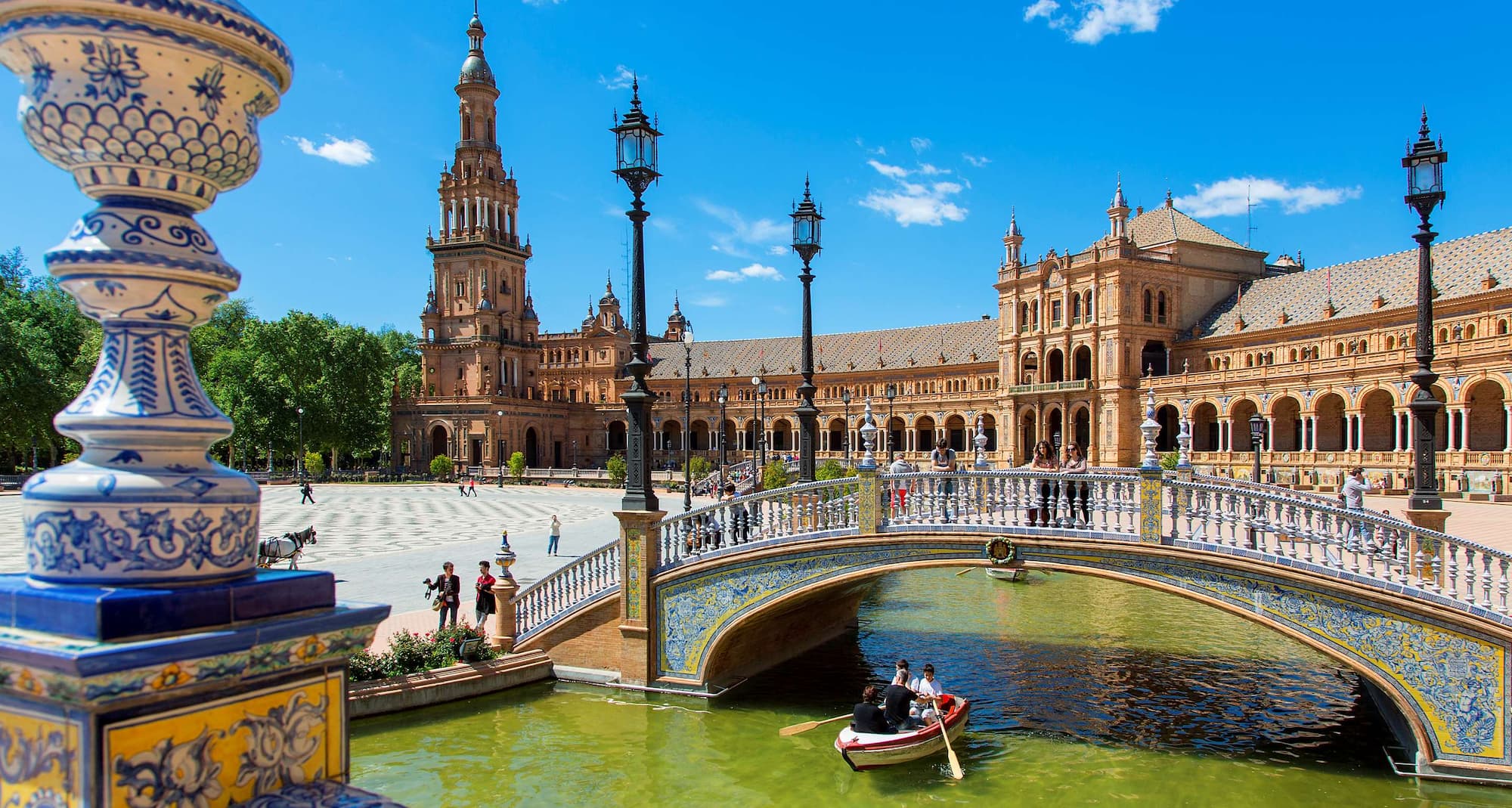
Our hotel brands
DESTINATIONS
South and West Europe

Top destinations
North and Central Europe

Middle East & Turkey
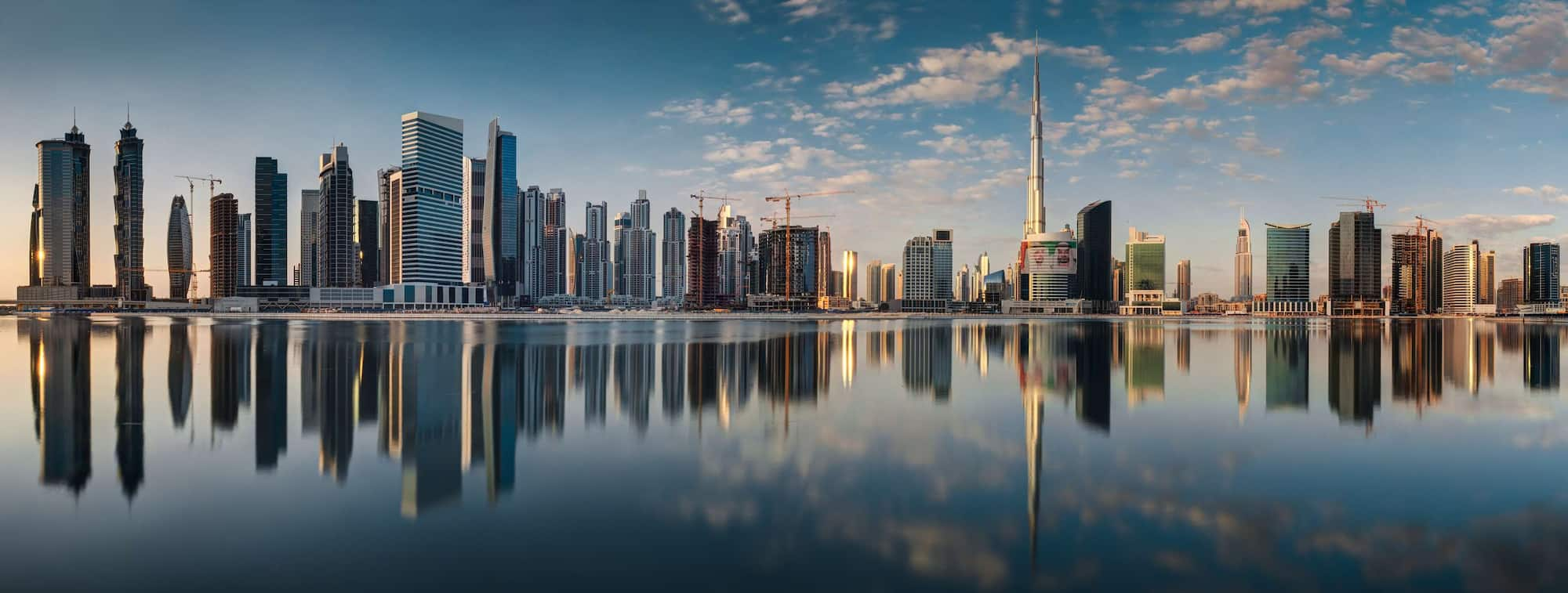
Africa and Asia Pacific
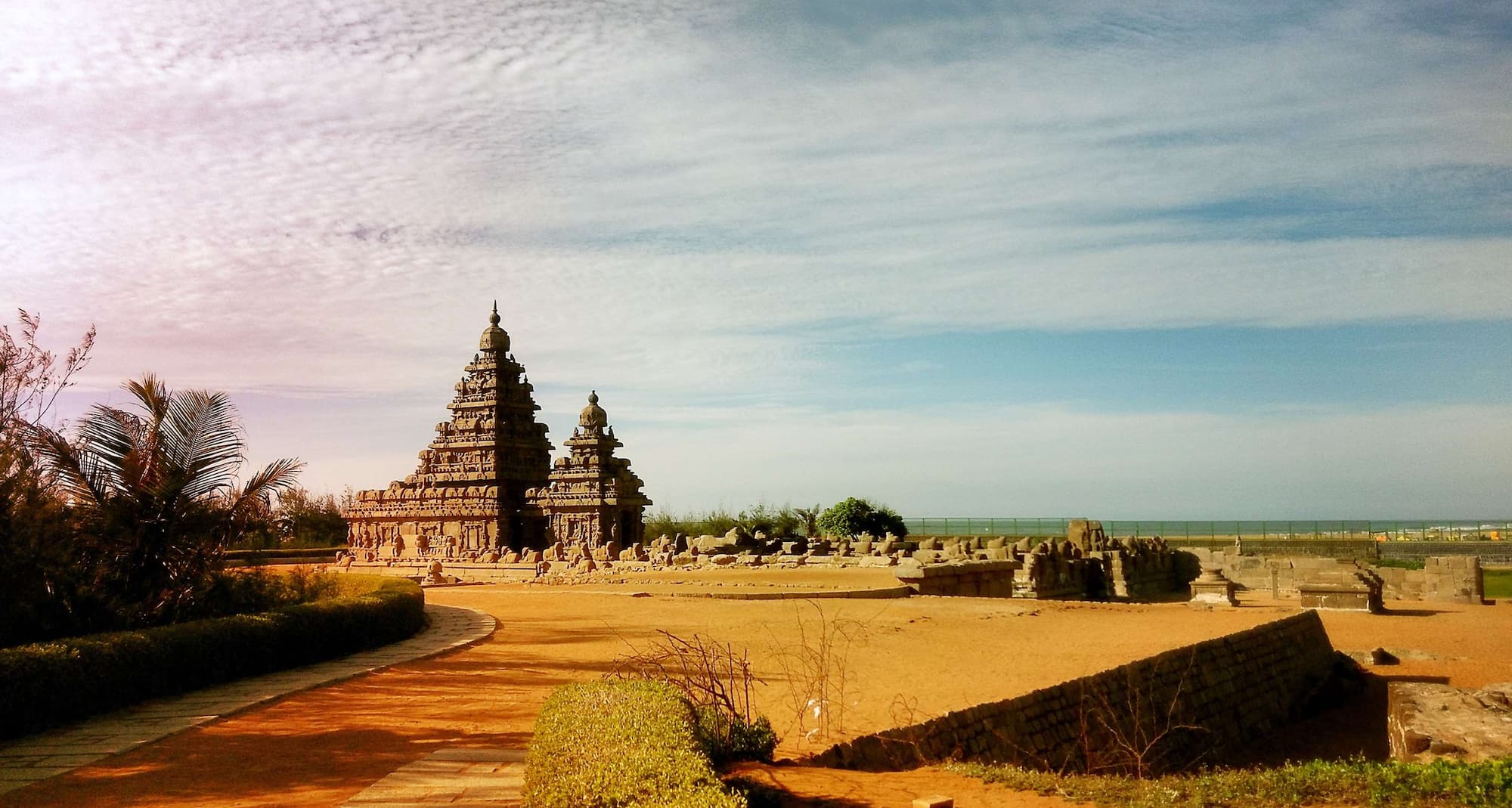
RADISSON REWARDS

About Radisson Rewards
Your Rewards points
Latest News

Get Inspired
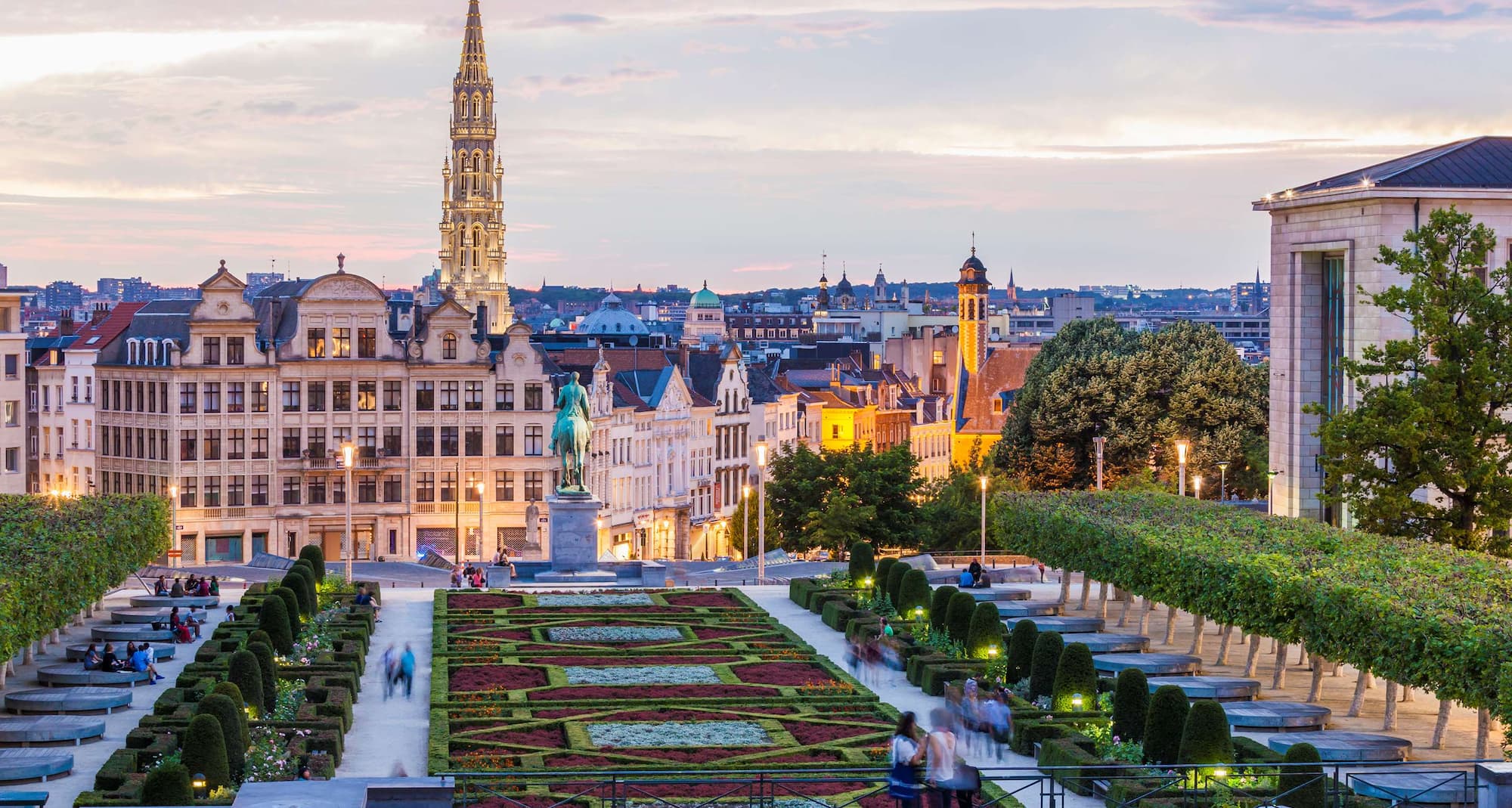
Event solutions
About Radisson Meetings
TRAVEL EXPERIENCES

Travel experiences

Travel Inspiration

DIGITAL SERVICES

Suggested languages
All languages.
Main Currencies
All Currencies
Welcome back
- Corporate program page
- Corporate members
- Russian Federation
Radisson Slavyanskaya Hotel & Business Center, Moscow
Book cozy rooms by the scenic Moskva River embankment, Moscow's center for business and tourism
- Restaurants & Bar
- Fitness & Wellness
- Nearby Attractions
- Citizens of the Russian Federation must present the following original documents upon check-in: adults and children over 14 - internal passport; children under 14 - birth certificate. All children must present a written letter of consent from a parent or guardian when traveling without their parents (children under 14 must be accompanied by adults).
- In order to bring you the best experience, the hotel is undergoing maintenance work in some rooms and public areas during the daytime. Maintenance activities are carried out daily from 10 am - 6 pm and may cause construction noise. We sincerely apologize for any inconvenience.
- Please note our swimming pool, hot tub, and ladies' sauna and hammam will be closed for cleaning from May 13-17. The men's sauna and hammam will also be closed from May 13-22. The gym, group fitness classes, and solarium will continue operating as usual. We apologize for the inconvenience.
- We regret to inform you that Radisson Rewards members are currently not able to pay with points for this hotel.
Radisson Slavyanskaya Hotel & Business Center, Moscow - Contact information
General contact.
- +7 495 941 80 20
- [email protected]
Reservations
- + 7 495 941 80 21
Meetings & Events
- +7 495 941 80 20 ext. 3271
- 7 495 941 80 20 ext. 3351
- [email protected]
Talavera Restaurant
- +7 495 941 80 20 ext. 3269
Sumosan Restaurant
- +7 495 941 88 41
Mukuzani Restaurant
- +7 495 941 87 10
Asia Beauty Spa
- +7 495 941 87 77
- +7 495 941 80 20 ext. 3260
How to get to the Radisson Slavyanskaya Hotel & Business Center
From vnukovo international airport, from sheremetyevo international airport, by public transport:, from domodedovo moscow airport, from kievskaya, from kiyevsky railway station, how to arrive at radisson slavyanskaya hotel & business center, moscow, documents and brochures.
- Star certificate (in Russian)
- Legal information (in Russian)
- House rules (in Russian)
You are trying to access additional information which is available in English. Please, select whether you would like to continue to the English website or remain on your current page.
Sign in to my account
Your session has expired.
Please sign in again to reconnect or click below to go to the home page.
Forgot your password?
Language and Currency
No results found
Add a voucher code
The Owner voucher code is incorrect
Please change to the correct account or search for a new voucher code
Voucher code expired or not valid
No results for the voucher code you are adding
Welcome to Radisson Rewards
- Not yet a member?
Sign into your account
Not yet a Radisson Rewards member?
Reset your password
Your session is about to expire!
You will be logged out automatically in a few minutes due to inactivity. Please click on the sign in button to log in again.
Your session has expired!
You’ve been logged out automatically due to inactivity. Please click on the sign in button to log in again.

A code was sent to

IMAGES
VIDEO
COMMENTS
The Challenge and Change of Travel and Tourism. Unit 1: Travelling Like a Geographer. Overview. In the first unit of this course, you will begin to explore what it means to travel like a geographer. To do so, you will practice utilizing a set of tools called the Inquiry Method and the Geographic Thinking Concepts. You will also begin to analyse ...
B. Write an essay in about 500 words on 'Importance of Tourism in Nepal'. Nepal is known for being one of the most famous travel destinations in the world. With thousands of tourists visiting the county every year, Tourism in Nepal has soared to new heights. The capital city of the country, Kathmandu and the city of lakes, Pokhara are the ...
11 terms. AdriannaThompson22. Preview. Study with Quizlet and memorize flashcards containing terms like Ecotourism, Travel, Tourist and more.
Summary Of Units And Timelines For Grade 11 Travel and Tourism: A Geographic Perspective CGG3O. Below is the suggested sequence of course unit delivery as well as the recommended number of hours to complete the respective unit. For complete details of targeted expectations within each unit and activity, please see each Unit Overview found in ...
Cgg3o. TRAVEL AND TOURISM: A REGIONAL GEOGRAPHIC PERSPECTIVE, GRADE 11, OPEN. overview. Students will attempt to calculate the true ecological cost of travel through an examination of energy and carbon costs of different forms of transportation and an assessment of the impact of tourism on travel destinations. Impact predictions will help guide ...
Canadian Geographic: Educator Resources, Grade 11 From Canadian Geographic, this webpage includes lesson plans on many topics, such as energy and natural resources, climate change and environment, regional geography, and geographic skills. ... making travel and tourism sustainable; the past, present and future of tourism; and the challenge and ...
Future Careers. CGG3O - Grade 11 Travel and Tourism (Open) This course focuses on travel and tourism to examine the unique characteristics of selected world regions from a geographic perspective. Students develop an understanding and appreciation of the ways in which the natural environments, economies, cultures, and other aspects of world ...
Travel and Tourism (A Geographic Perspective), Grade 11 Open (CGG3O) Geographic Inquiry and Skill Development. Use the geographic inquiry process and the concepts of geographic thinking when investigating geographic issues relating to travel and tourism. Apply in everyday contexts skills, including spatial skills, developed through geographical ...
Travel and Tourism: A Geographic Perspective CGG3O 1.0 Credit |Grade 11, Open Course Outline Instructors at WorldStrides Wendy Amato, Ph.D., Kiersten Teitelbaum, M.Ed., Randi Chapman, M.T. Course Description This course focuses on issues related to travel and tourism within and between various regions of the world.
Quizlet has study tools to help you learn anything. Improve your grades and reach your goals with flashcards, practice tests and expert-written solutions today.
Travel and Tourism: A Geographic Perspective, Grade 11: Open Cgg3O | PDF | Tourism | Sustainability. CGG3O Curriculum - Free download as PDF File (.pdf), Text File (.txt) or read online for free.
unit 1, travel and tourism, grade 11. Get a hint. Travel Motivators. Click the card to flip 👆. The reasons why people travel. environmental, adventure, cultural, business/work, specialty travel, social and family, relaxation and recreation. Click the card to flip 👆. 1 / 17.
This course focuses on travel and tourism as the vehicle for studying selected world regions. Using a variety of geotechnologies and inquiry and communication methods, students will conduct and present case studies that develop their understanding of the unique characteristics of selected world regions; the environmental, cultural, economic, and political factors that influence travel and
Grade 11: Travel and Tourism: Introduction. Resources supporting the Ontario Curriculum for grade 11: Travel and Tourism. Students will learn about the issues and skills related to travel and tourism. Introduction. Geographic Inquiry and Skill Development. Spatial Organization: Why, Where and How We Travel.
Resources supporting the Ontario Curriculum for grade 11: Travel and Tourism. Students will learn about the issues and skills related to travel and tourism. Introduction; Geographic Inquiry and Skill Development; Spatial Organization: Why, Where and How We Travel;
DCES: Tourism. Tourism is the study of the activities, services and industries that deliver a travel experience to groups or individuals. It is the study of the expectations and behaviour of tourists, and the economic, social and environmental impact of tourism on South Africa. Get in touch:
Why grade thresholds change; Our awarding standards; Feedback and complaints; Safeguarding. ... Cambridge IGCSE Travel and Tourism (0471) Past papers, examiner reports and specimen papers ... June 2022 Question Paper 11 (PDF, 928KB) June 2022 Mark Scheme Paper 11 (PDF, 199KB)
Grade 11: Travel and Tourism: Geographic Inquiry and Skill Development Resources supporting the Ontario Curriculum for grade 11: Travel and Tourism. Students will learn about the issues and skills related to travel and tourism.
A new floor sign system at the Moscow metro's Pushkinskaya station. Source: Vladimir Pesnya / RIA Novosti
Lyubertsy Tourism Lyubertsy (Russian: Люберцы; IPA: [ˈlʲʉbʲɪrtsɨ]) is a city and the administrative center of Lyuberetsky District in Moscow Oblast, Russia. Population: 172,525 (2010 Census); 156,691 (2002 Census); 165,478 (1989 Census).
Butovo Tourism: Tripadvisor has 30 reviews of Butovo Hotels, Attractions, and Restaurants making it your best Butovo resource.
Davis was a standout for the powerhouse Raiders, earning Super 11 and first-team All-County honors. He was a four-star prospect and the No. 25 cornerback in his class, according to 247Sports.
Radisson Slavyanskaya Hotel & Business Center, Moscow. 4.0 (View 2073 reviews) Square of Europe 2, Moscow, 121059, Russian Federation. +7 495 941 80 20. [email protected]. See the gallery.